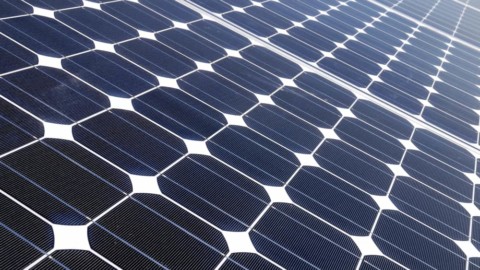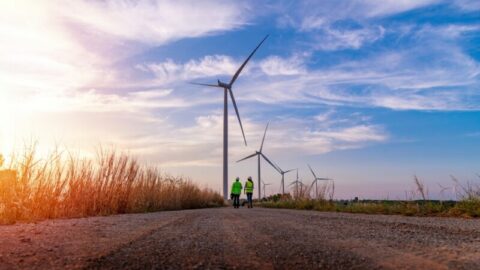by Mark Butler, Shadow Minister for Climate Change and Energy
Like every advanced economy in the world, Australia is faced with an energy sector undergoing rapid technological change. Yet for the last ten years, Australia’s transition has been hampered by the “climate wars” waged in Parliament and beyond. The heightened politicisation of climate and energy policy has resulted in a policy paralysis which threatens to stifle new generation investment from 2020, undermine a managed modernisation of our energy sector, undermine any decarbonisation efforts and expose the sector and the broader economy to heightened financial as well as operational risks.
While the technical and policy challenges that our energy transition entails are substantial, they pale into insignificance alongside the political challenge of establishing a bipartisan policy consensus on energy. What is often lost in the debate is the fact that, were climate change not an issue at all, we would still be facing a national need to replenish large parts of our electricity generation infrastructure. In particular, ageing and increasingly unreliable coal generation built in the 1960s, 70s and 80s will need to be replaced in the next two decades. With large and small-scale renewable costs continuing a long-term downward trend, and coal costs remaining relatively constant, even without a climate imperative, we would expect to see fundamental change in how and where we generate electricity, as well as how we use it. Managing this transition would be a national challenge, even in the best of all possible worlds, but we don’t live in the best of all possible worlds and we cannot ignore the imperative of climate change.
Australia has rightly signed up to the Paris Accords, which commit Australia to do our fair share of greenhouse gas abatement to limit global warming to well below two degrees. The Paris Accords include a process for increased ambition, and Australia’s initial Nationally Determined Contribution (NDC) of a 26 per cent economy-wide emissions cut is only the first in what is meant to be a series of commitments that increase over time to deliver the overarching Paris Accord goal.
We cannot ignore our obligations under the Paris Accords and we should not pretend they are fully exhausted by the Coalition’s initial NDC. This means the transition we would expect in the electricity system will need to be larger and faster than would occur without a climate change imperative.
Given the scale of the transformation we are facing, we need sound policy to guide and manage the transition.
After several false starts with an Emissions Intensity Scheme and Clean Energy Target, the National Energy Guarantee (NEG) is now the policy we are debating to deliver this transition. The design of the NEG has come a long way since it was first released in an eight page letter from the Energy Security Board. While significant progress has been made, the core and seemingly intractable difference between Federal Labor and the Federal Coalition remains the emissions reduction obligation under the NEG.
We take the view that the NDC of a 26 per cent economy-wide emissions cut on 2005 levels by 2030 falls short of what we need to deliver. Labor has accepted the Climate Change Authority’s advice on our fair contribution to Paris, and adopted a 45 per cent emissions reduction target. But this isn’t the only point of contention. The Government has decided the electricity sector should only do its pro rata share of any economy-wide emissions reduction task, placing an equal abatement task on the rest of the economy. But electricity has the lowest abatement cost of any sector, and decarbonisation in electricity will drive decarbonisation in other sectors like transport and industry.
The Energy Security Board’s final design paper for the NEG shows by 2021, Australia would have already reduced emissions by 24 per cent, on a 2005 baseline – due to the current rush of renewable investment being driven by the LRET – essentially leaving the abatement task of the NEM over the 2020s to just two per cent by 2030. In contrast, the agriculture, transport and industrial sectors will need to cut their emissions by over 40 per cent over the same period, according to the government’s latest emission projection data. These are sectors that have far fewer abatement opportunities, and whose opportunities come at much greater cost.
It is not only economically efficient for the electricity sector to take up a greater burden of emissions cuts; it is increasingly seen as an opportunity by the sector itself. For example, Origin Energy has been clear that it sees the Government’s electricity abatement target as too low, saying “the electricity sector can do more than its pro rata share of the target, as it has cost-effective abatement options available to it which could be unlocked given the right policy settings”.
It is clear to all the energy experts and industry insiders the transition of our energy sector, while being a challenge, is also a huge opportunity. It is an opportunity to better serve customers, to modernise our infrastructure, to create new businesses and jobs, to develop new supply chains and export markets, and to take advantage of our massive human and natural renewable energy resources.
In order to make sure this transition benefits the Australian people, creates new wealth and doesn’t leave people and regions behind, we need government policy that works with the currents of technology and economics, not against them. The role of government, especially when large transitions occur, is to manage risks, protect equity and guide the country to a more prosperous future. It is not to fight against an inevitable future.
The debate in Parliament has been reduced to the Prime Minister proclaiming coal may be in the energy mix “possibly forever” and signalling further market intervention into extending ageing, increasingly unreliable coal-fired power stations. While coal will continue to play a part in our energy mix for years to come, to ignore the inevitable transition to a clean energy economy is a farce. It flies in the face of the need for what we call a “just transition” plan for communities that will inevitably be confronted with the closure of their power stations.
Just transition puts affected workers and communities at its centre. It means industry, workers and governments coming together and doing what’s needed to ensure no one is left unemployed and without support. But central to any just transition is a cooperative and collaborative approach between workers and their unions, industry and government, regardless of party affiliation.
While working towards a bipartisan solution to the energy crisis has been our preferred solution, Federal Labor has had a clear commitment to emissions reduction since the 2016 election. Our targets, a 45 per cent cut in emissions (on 2005 levels) by 2030, net zero emissions by 2050 and 50 per cent renewable energy by 2030, need to be workable under any energy policy.
The complexity and divisiveness of energy policy make it easy to get bogged down in the details. That’s why it is crucial to remember the big picture.
Any sensible energy policy must do one central thing: support the modernisation of our energy system. That means replacing old coal generation that will close in coming decades with cleaner and more flexible renewables backed up by dispatchable technology, whether battery or pumped hydro storage, gas generation or demand management. Delaying this inevitable transition isn’t a plan for cheaper, cleaner or more reliable power; it is a recipe for wasted time and resources, higher prices and pollution.


















